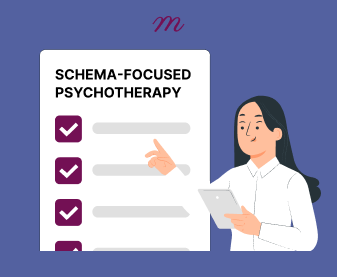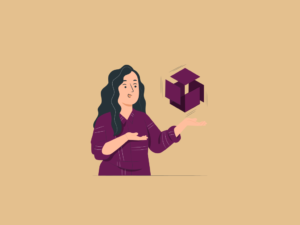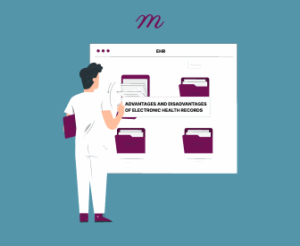Schemas consist of negative/dysfunctional thoughts and feelings that develop early in life because caregivers do not adequately meet a child’s need for connection, autonomy, play, spontaneity, limits, and assertions. Negative patterns are repeated and strengthened throughout the client’s life, creating obstacles to accomplishing their goals and meeting their needs.
Client examples of schema beliefs: “I’m unlovable,” “I’m a failure,” “No one cares about me,” “I’m unimportant,” “Something bad is going to happen to me,” “People always end up rejecting me,” “I never get my needs met,” “I’m never good enough,” and so on.
Schemas are perpetuated behaviorally through the coping styles of schema maintenance, schema avoidance, and schema compensation. Coping mechanisms are schema modes, the moment-to-moment emotional states, and coping responses everyone experiences. Situations that cause an overreaction and the client to act in ways that hurt themselves or others frequently serve as triggers for coping mechanisms.
The Objectives of Schema Therapy
The primary objective of schema therapy is to address unmet childhood needs and develop healthy alternatives to current maladaptive coping mechanisms.
What Are Schemas and Modes?
Schemas Emotional Deprivation: The belief and expectation that primary needs will never be met (nurturing, care, guidance, protection, empathy).
Abandonment: Others will leave and are unreliable. Relationships are fragile, and loss is inevitable.
Mistrust/Abuse: Others are abusive, manipulative, or selfish.
Defectiveness: Rejection is inevitable because one is flawed, damaged, or unlovable.
Social Isolation: The pervasive sense of aloneness coupled with alienation.
Vulnerability: The world is a dangerous place, and disasters can happen at any time. The challenges that lie ahead are overwhelming.
Dependence/Incompetence: Inability to make decisions, questionable judgment, must rely on others to accomplish responsibilities.
Enmeshment/Undeveloped Self: Lack of identity or “individuated self” separate from one or more significant others.
Failure: Expectation or belief that one will fail.
Subjugation: One must submit to the control of others or suffer punishment or rejection.
Self-Sacrifice: One must voluntarily give up needs for the sake of others.
Approval/Recognition-Seeking: Approval, attention, and recognition are far more critical than genuine self-expression and being true to oneself.
Emotional Inhibition: One must control self-expression or suffer rejection or criticism.
Negativity/Pessimism: Negative aspects of life outweigh the positive and negative expectations for the future.
Unrelenting Standards: One must be the best, always striving for perfection.
Punitiveness: People should be harshly punished for their mistakes or shortcomings.
Entitlement/Grandiosity: One is more important than others; there is no need to follow the rules despite negative consequences. Exaggerated focus on superiority for power and control.
Insufficient Self-Control/Self-Discipline: Inability to accomplish goals if the process is tedious, repetitive, or frustrating. One cannot resist acting upon impulses that lead to damaging results.
Modes
Child Modes
- Vulnerable Child: feels lonely, isolated, sad, misunderstood, unsupported, defective, deprived, overwhelmed, incompetent, self-doubting, needy, helpless, hopeless, frightened, anxious, worried, victimized, worthless, unloved, unlovable, lost, directionless, fragile, weak, defeated, oppressed, powerless, left out, excluded, pessimistic
- Angry Child: feels enraged, infuriated, frustrated, and impatient because the core needs of the vulnerable child are unmet
- Impulsive/Undisciplined Child: acts on desires or impulses in a selfish or uncontrolled manner to get their way and has difficulty delaying short-term gratification; enraged, furious, frustrated, and impatient when desires or impulses are unmet; appears “spoiled”
- Happy Child: feels loved, contentment, connected, satisfied, fulfilled, protected, accepted, praised, worthy, nurtured, guided, understood, validated, self-confident, competent, autonomous, self-reliant, safe, resilient, strong, in control, adaptable, included, optimistic, spontaneous
Maladaptive Coping Modes
- Compliant Surrenderer: acts in a passive, subservient, submissive, approval-seeking, or self-deprecating way out of fear of conflict or rejection; tolerates abuse and lousy treatment; fails to express healthy needs or desires; selects people or engages in behavior that maintains the self-defeating schema-driven patterns
- Detached Protector: detaches from needs and feelings; detaches emotionally from people and rejects their help; feels withdrawn, spacey, distracted, disconnected, depersonalized, empty, or bored; pursues distracting, self-soothing or self-stimulating activities compulsively or excessively; adopts a cynical, aloof, or pessimistic stance to avoid investing in people or activities
- Over-Compensator: feels and behaves in an inordinately grandiose, aggressive, dominant, competitive, arrogant, haughty, condescending, devaluing, over-controlled, controlling, rebellious, manipulative, exploitative, attention- or status-seeking way. Developed initially to compensate for or gratify unmet core needs
Maladaptive Parent Modes
- Punitive Parent: feels oneself or others deserve punishment or blame and acts on these feelings by blaming, punishing, or abusing toward self (e.g., self-mutilation) or others
- Demanding Parent: feels the “right” way is to be perfect or achieve at a very high level, keeps everything in order, strives for high status, puts others’ needs before one’s own, efficient or avoids wasting time; feels it’s wrong to express feelings or to act spontaneously
Healthy Adult Mode
- Healthy Adult: nurtures, validates, and affirms; sets limits; supportive; combats and eventually replaces maladaptive coping modes; neutralizes or moderates maladaptive parent modes. Performs appropriate adult functions such as working, parenting, taking responsibility, and committing; pursues pleasurable adult activities such as sex, intellectual, esthetic, and cultural interests; health maintenance; and athletic activities
Examples
Abandonment Schema. Client fears close relationships will end, leaving them feeling alone and unsupported. This makes them clingy and overly dependent in relationships as they constantly seek reassurance.
Schema Therapy:
- Assist the client in exploring early experiences that created this fear (e.g., unstable childhood relationships)
- Create healthy ways to manage relationships
- Provide corrective emotional experiences by offering consistent, stable support to challenge the client's belief that rejection and abandonment are inevitable
Mistrust/Abuse Schema. Client believes others will hurt, cheat, or take advantage of them, stemming from early experiences of betrayal and sexual abuse. Client avoids intimate relationships and expects the worst from people. Paranoid and overly suspicious.
Schema Therapy:
- Encourage the client to recognize how this schema is overly generalized and how it impacts relationships
- Address the underlying trauma
- Develop trust in the therapeutic relationship to challenge the assumption that everyone is untrustworthy
Defectiveness/Shame Schema. Client feels fundamentally flawed and unlovable, believing that if others truly knew them, they would reject them. Self-critical, isolated, and trying to hide perceived flaws.
Schema Therapy:
- Challenge beliefs by focusing on positive qualities
- Address the source of the shame (early criticism and parental rejection)
- Help the client develop self-acceptance and stop seeking validation from others to compensate for feelings of defectiveness
Emotional Deprivation Schema. Client feels emotionally neglected and believes no one can fulfill their emotional needs. They struggle in romantic relationships, feeling unloved and unsupported. Unable to recognize the positive aspects of their connections.
Schema Therapy:
- Recognize and challenge their perception of emotional neglect
- Encourage them to ask for and accept support
- Role-play and imagery work to help the client access unmet emotional needs and express them appropriately
Subjugation Schema. Client prioritizes others' needs over their own, believing they must comply with others to avoid conflict, rejection, and punishment. Resentful and angry. Lacks self-expression.
Schema Therapy:
- Recognize their compliance is driven by fear rather than genuine choice
- Explore healthier ways to assert personal needs and set boundaries
- Reduce feelings of powerlessness
Punitiveness Schema. Client believes they (and others) should be harshly punished for making mistakes. Self-criticism, guilt, and harsh judgment of themselves and others.
Schema Therapy:
- Develop a more forgiving and compassionate approach to mistakes
- Recognize punishment is unnecessary for personal growth
- Engage in self-compassion exercises to soften the client's rigid expectations
Therapists may also use experiential techniques such as:
- Imagery Rescripting: re-imagine traumatic childhood events and change the outcomes
- Chair Work: engage in dialogue with different parts of themselves, such as their critical voice or vulnerable child
These techniques help clients reprocess past experiences and integrate healthier schemas.
Clients Best Suited for Schema Therapy
Clients who choose schema therapy have often spent years trying various other types of psychotherapy but find their lack of improvement frustrating. As they begin schema therapy, they complete a series of assessments and learn to recognize which schemas and problematic coping styles affect them the most. They begin to understand the origins of these schemas and identify ways to make long-lasting changes. Schema therapy effectively treats chronic depression, anxiety, addictions, and relationship problems.
As therapy progresses, clients are expected to consistently complete structured homework assignments outside of sessions to challenge their negative thoughts. In session, the client works with their therapist to empathically confront the causes of their problematic habits and explore destructive patterns. The therapist provides antidotes to meet the client’s unmet childhood needs or adverse childhood experiences (e.g., abuse, abandonment, or neglect).
References
Bricker, D. and Young, J. (1993). A Client's Guide to Schema-Focused Cognitive Therapy. Cognitive Therapy Center of New York.
Giesen-Bloo, J. et al. (2006). Randomized Trial of Schema-Focused Therapy vs. Transference-Focused Psychotherapy: Outpatient Psychotherapy for Borderline Personality Disorder. Archives of General Psychology, 63:649-658.
Young, J., Klosko, J., & Beck, A. (1994). Reinventing Your Life: The Breakthrough Program to End Negative Behavior and Feel Great Again. Penguin Publishing Group.
Why other mental health professionals love Mentalyc

“It immediately changed my quality of life, personally and professionally. I went from 3–4 hours a week of notes to 1 hour at most … that alone is invaluable personally and professionally.”
Owner/Independently Licensed Marriage & Family Therapist (IMFT)

“Do yourself a favor, make your life easier. Use the tools that are readily available … I found Mentalyc to be one of the best tools that I’ve ever used.”
Licensed Marriage and Family Therapist

“For those who have hesitations … It is a lifesaver. It will change your life and you have more time to be present with your patients.”
Licensed Clinical Social Worker

“If I were recommending this software to a colleague, I would tell them that it is the best thing that they could do for their practice.”
Licensed Professional Counselor






